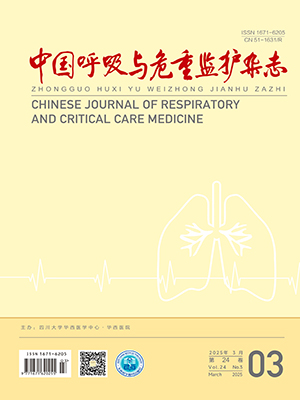Objective To investigate nosocomial non-fermented bacterial infection in lower respiratory tract and the risk factors for multi-drug resistant bacterial infection. Methods 229 patients with nosocomial nonfermented bacterial infection in lower respiratory tract from January to December in 2007 in Xiangya Hospital were analyzed retrospectively. The distribution and drug sensitivity of pathogens were recorded. Of those 229 patients,183 cases were infected by non-fermented multi-drug resistant bacteria( MDRB) . The risk factors for non-fermented MDRB infection in lower respiratory tract were analyzed by multi-factor logistic multiple regression analysis.Results The top four non-fermented bacteria isolated were Pseudomonas aeruginosa( 47.6%) , Acinetobacter baumannii( 36. 3% ) , Acinetobacter spp( 8. 6% ) , and Stenotrophomonas maltophilia( 5. 1%) . Higher isolatated rate was found in neurosurgery ( 25. 7% ) and central ICU( 22. 9% ) . The isolated non-fermented bacteria except Stenotrophomonas maltophilia were resistant to all antibiotics except cefoperazone-sulbactam and meropenem. ICU stay( P lt; 0. 001) , tracheotomy or tracheal intubation( P = 0. 001) , and previous use of carbapenemantibiotics( P =0. 032) were independent risk factors for non-fermented MDRB infection. Conclusion Non-fermented bacillus were important pathogens of nosocomial infection in lower respiratory tract with high rates of antibiotic resistance. It is important to prevent non-fermented MDRB infection by strict limitation on the indication of ICU stay,tracheotomy and use of carbapenem.
Citation: CAI Xingdong,HU Chengping,ZHONG Youqing,LIU Sujun,CHEN Jian. Nosocomial Non-fermented Bacterial Infection in Lower Respiratory Tract and Risk Factors for Multidrug Resistant Bacterial Infection. Chinese Journal of Respiratory and Critical Care Medicine, 2009, 09(1): 28-32. doi: Copy
Copyright © the editorial department of Chinese Journal of Respiratory and Critical Care Medicine of West China Medical Publisher. All rights reserved
-
Previous Article
A Survey Analysis of Clinicians’ Knowledge and Attitudes towards Patient Safety ZHANGQiongwen, CHEN Xiyang, ZHOU Yang, FAN Zhiyu, DONG Xinxin, LIU Ying, WANG Fei, WANG Haiqing, WAN Xiaoli, DUAN Yurong, ZHANG Mingming -
Next Article
Investigation of Communication between Medical Students and Old Patients LIJun, WU Hongmei, DONG Birong, YANG Ming, CAO Li, WANG Hui, ZHANG Xuemei, YAO Xun




